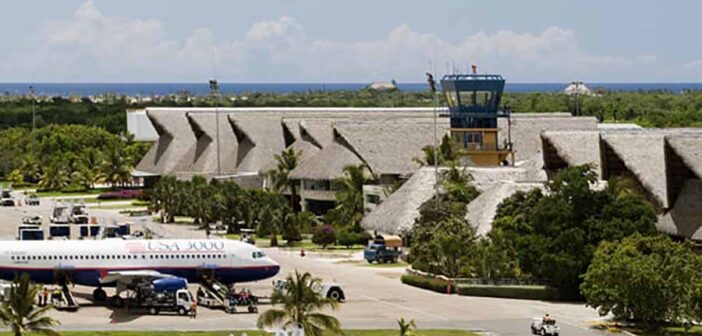Punta Cana International Airport, located 5 kilometres from downtown Punta Cana on the Dominican Republic’s eastern coast, serves as the country’s busiest airport, handling over 9 million passengers annually. As a key hub for 52 airlines, including United Airlines, Lufthansa, and budget carriers like Spirit, it connects travellers to 64 cities across 26 countries, offering a welcoming entry to the Caribbean’s renowned beaches and resorts.
Accessing the airport is straightforward with several transport options.
Taxis and rideshare services like Uber, available outside both terminals, cost €25–€40 for a 15–30-minute ride to Punta Cana’s resorts or city centre, depending on traffic. Pre-booked private transfers, such as those offered by CanaTransfers, provide a hassle-free option with fixed rates starting at €20. Public buses, known as guaguas, serve local routes for €1–€2, though schedules are less reliable. Drivers can use the Carr. Aeropuerto road, with two parking lots offering short- and long-term stays, costing €0.50–€7.50 per day, payable at pay stations in Terminal A’s arrivals hall or Terminal B’s parking entrance. A complimentary shuttle serves Four Points by Sheraton guests.
The airport’s two main terminals, A and B, are designed with open-air spaces and thatched roofs, creating an airy, tropical feel. Terminal A handles most international flights, while Terminal B serves domestic and regional routes. Both are side-by-side, connected by a short walk or shuttle, with 22 gates and 46 check-in desks ensuring efficient navigation. Clear signage in English and Spanish aids movement, though peak seasons from December to April can lead to crowded security and immigration areas. Passengers should arrive three hours early for international flights and two hours for domestic ones to manage potential queues, especially at Terminal A’s passport control.
Dining and retail options cater to a range of tastes. The food court in Terminal B features familiar brands like Wendy’s, Taco Bell, Cinnabon, and Segafredo, offering Dominican dishes like mofongo alongside fast food, open from 6:00 AM to 10:00 PM. Duty-Free Americas in both terminals stocks rum, cigars, and local crafts, while Brisas del Caribe sells art and souvenirs. Prices are higher due to airport fees, with a coffee costing €3–€5. Limited 24-hour dining means late-night travellers should plan ahead.
Facilities enhance the travel experience with practical amenities. Free Wi-Fi is available via the “VINCI Airports WiFi” network, though connectivity can be inconsistent, and charging stations are limited, so a power bank is advisable. Three VIP lounges in Terminal B offer snacks, Wi-Fi, and showers for €30–€40, accessible to all passengers. Families benefit from breastfeeding rooms in both terminals and play areas near gates A1, A9, and B28. Passengers with reduced mobility can access ramps, adapted toilets, and MyWay assistance, bookable 48 hours in advance. Baggage storage is unavailable, with alternatives at nearby resorts. A pharmacy, ATMs, and currency exchange booths operate daily, and a lost-and-found desk assists with misplaced items.
On-time performance is generally reliable, with real-time updates via Flightradar24, the airport’s website, or terminal screens. Handling around 22,000 annual aircraft movements, the airport maintains smooth operations, though peak-season congestion can cause minor delays. Major carriers like American Airlines and JetBlue ensure consistent schedules, but budget airlines may face cancellations due to high demand.
Connections are efficient for single-ticket passengers, with minimum connection times of 60 minutes for domestic and 90 minutes for international flights. Baggage is typically transferred automatically, and the co-bus shuttle aids terminal transfers. Separate-ticket travellers should allow extra time for baggage reclaim and re-check-in, especially for non-Schengen flights requiring immigration. Fast Lane security, bookable for €10, speeds up processes.
Potential delays often stem from long security and immigration queues, particularly in Terminal A, where non-EU passport checks can take up to an hour with limited desks. Staffing shortages and strict security measures, like the 100ml liquid rule, can slow progress, with some travellers reporting unhelpful staff. Ground handling issues, such as insufficient buses for remote gates, and weather disruptions during the June-to-November hurricane season may also cause delays. Using mobile boarding passes and arriving early can help.Punta Cana International Airport delivers a practical and traveller-friendly experience. Its proximity to resorts, efficient layout, and solid amenities make it a dependable choice for Caribbean travel.




